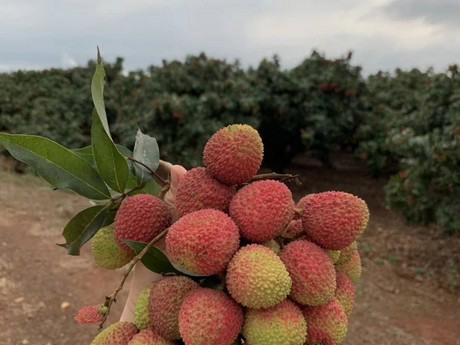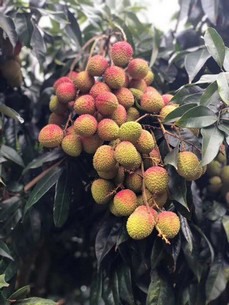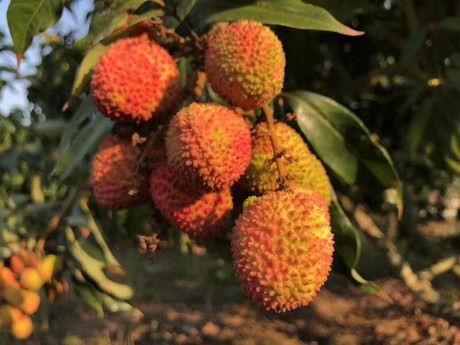The overall production volume of Chinese lychee is smaller this year than it was last year. Several farmers have stated that extreme weather conditions are the reason for this development. Lychee are not an easily cultivated agricultural product. The lychee trees are particularly vulnerable to weather changes during the blossom season. If the weather is either too hot or too cold during blossom season, then the production volume immediately declines in response. The production volume declined this year because the temperature was too high. The lychee from production areas in the south of Hainan enter the market first. In general, the production areas in the south suffered worse from extreme weather conditions than production areas in the north.

Fresh lychee
 "Our observations show that there are three main reasons for the decline in overall production volume: the first reason is the warm weather. High temperatures are not beneficial for the development of lychee. The trees are unable to gather sufficient nutrients for the production of flowers. At the same time, high humidity levels and limited sunshine also have an adverse effect on the development of flowers in medium- to late-season lychee varieties.
"Our observations show that there are three main reasons for the decline in overall production volume: the first reason is the warm weather. High temperatures are not beneficial for the development of lychee. The trees are unable to gather sufficient nutrients for the production of flowers. At the same time, high humidity levels and limited sunshine also have an adverse effect on the development of flowers in medium- to late-season lychee varieties.
The second reason is the excessive production of last year. The lychee harvest was abundant last year. Lychee trees exhausted nutrient reserves on the excessive harvest and the trees take a long time to rebuild those nutrient reserves. This year the lychee trees lack sufficient nutrient reserves for a regular production volume. The number of flowers during blossom season was much lower than normal.
The third reason is excessive rainfall during blossoming. Rainfall continued for days during the blossom season and many flowers were destroyed by excessive rainfall. This too had a direct impact on the overall production volume of lychee this year. In the end, the combination of 'abundant harvest' and 'warm winter' was further exacerbated by continuous rainfall. After all these setbacks lychee trees had only a few flowers left and the overall production volume greatly declined this year." This is according to Liao Zhiheng of Dingming Agricultural Science and Technology (Guangzhou) Co., Ltd.

Fresh lychee
"Around 80% of the global lychee production volume comes from China, and around 60% of the Chinese lychee production volume comes from Guangdong. Lychee farmers in Guangzhou are as busy harvesting lychee as their colleagues in other production areas. This year's production volume dropped by 50%, but the purchase price increased.
The wholesale market price naturally increased as well, but not as much as the purchase price. Brokers in the middle are engaged in fierce competition to maintain their profit margin. The price is quite stable. We currently purchase lychee from Hainan, Guangdong, and Guangxi. We sell our lychee in wholesale markets in large cities throughout China, such as Guangzhou, Jiaxing, Nanchang, Hunan, Guangxi, Hubei, Guiyang, and Chengdu. At the same time, we also hope to expand our retail channels and gain a foothold in Beijing market."
Contact person: Liao Zhiheng
Company name: Dingming Agricultural Science and Technology (Guangzhou) Co., Ltd.
Telephone number: +86 18898638770
